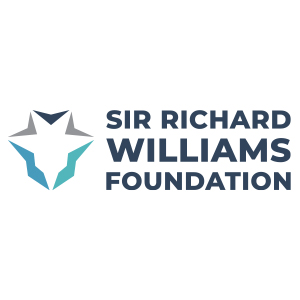On April 8, 2021, the Williams Foundation held its latest seminar, one that was originally scheduled for March 2020.
It was an in person conference for Australians, but we will be highlight the seminar in a report on the conference as well as providing presentations as well as interviews with participants.
This is how the seminar was prologued in the run up to the seminar itself.
Since 2013 the Sir Richard Williams Foundation seminars have focused on building an integrated fifth generation force. Recent seminars have evolved from the acquisition of new platforms to the process of shaping and better understanding the environment in which the integrated force will prepare and operate. Moreover, they have highlighted the challenges of acting independently at an accelerated tempo and in sustained, high intensity, complex Joint operations.
While COVID-19 prevented the Foundation from hosting any seminars in 2020 the narrative remains. The 2021 seminars will therefore continue to develop the ideas associated with an increasingly sophisticated approach to Joint warfighting and power projection as we face increasing pressure to maintain influence and a capability edge in the region.
Following on from the October 2019 seminar titled ‘The Requirements of Fifth Generation Manoeuvre’, the 2021 series of seminars and lunches will examine:
- the emerging requirements associated with trusted autonomous systems, and
- the growing importance of Space as an operating domain.
In doing so, they will each address how the Australian Defence Force must equip, organise, connect, and prepare for multi-domain operations. As ever, the Sir Richard Williams Foundation has identified pre-eminent speakers from across the Australian and international defence communities, as well as invited industry representatives to reflect the integral role they will play in the national framework of future operational capability.
April 2021 Seminar Outline – Next Generation Autonomous Systems
Building upon the existing foundations of Australian Defence Force capability, the aim of the April seminar is to explore the force multiplying capability and increasingly complex requirements associated with unmanned systems. From its origins at the platform level, the opportunities and potential of increased autonomy across the enterprise are now expected to fundamentally transform Joint and Coalition operations. Defence industry can and will play a major part in the transformation with opportunities extending beyond platforms to the payloads and enabling systems which underpin the necessary risk management and assurance frameworks demanded by Defence. The importance of industry is reflected in the design of the seminar program and the speakers identified.
The concept of the Unmanned Air System (UAS), or Unmanned Aerial Vehicles (UAV), is nothing new nor is their use in missions which traditionally challenge human performance, fragility, and endurance. Often described as the dull, dirty, and dangerous missions, unmanned systems have now provided the commander with a far broader range of options for the application of force against even the most challenging target sets. However, ongoing operational experience confirms unmanned systems on their own are not the panacea and trusted autonomy in manned and unmanned teaming arrangements in each environmental domain is emerging as the game changer.
The narrative is now forming across defence which has progressed the argument for greater numbers of unmanned systems in a far more mature and balanced way than hitherto. The manned-unmanned narrative is now sensibly shifting towards ‘and’, rather than ‘or’. Manned and unmanned teaming leverages the strengths and mitigates the weakness of each platform and concentrates the mind on the important operational aspects, such as imaginative new roles, and the challenges of integration to generate the desired overwhelming firepower.
This capability will require a complex web of advanced data links and communication systems to make it operate as a combat system. Designing and building the ‘kill web’ so that it can enable the delivery of manned-unmanned firepower across domains will be a huge challenge not least due to the laws of physics. However, the ability to train, test, evaluate and validate tactics and procedures will add a whole new level of complexity to generate the ‘trusted autonomy’ required for warfighting.
The aim of the April 2021 seminar, therefore, will be to promote discussion about the near and far future implications of autonomous systems, and to build an understanding of the potential and the issues which must be considered in the context of the next Defence White Paper and Force Structure Review. It will investigate potential roles for autonomous systems set within the context of each environmental domain, providing Service Chiefs with an opportunity to present their personal perspective on the effect it will have on their Service.
The seminar will also explore the operational aspects of autonomous systems, including command and control and the legal and social implications that affect their employment. And finally the seminar will examine the current research agenda and allow industry an opportunity to provide their perspective on recent developments in unmanned air, land, surface and sub-surface combatants. Each of which are opening new ways of warfighting and creating opportunities to reconceptualise Joint operations and move away from the platform-on-platform engagements which have traditionally characterised the battlespace.
Below is the handbook distributed to participants at the seminar which highlighted the goals of the seminar and the major presentations as well:
WFNGAS0421HandbookFINAL5April21For an e-book version of the handbook, see below:


